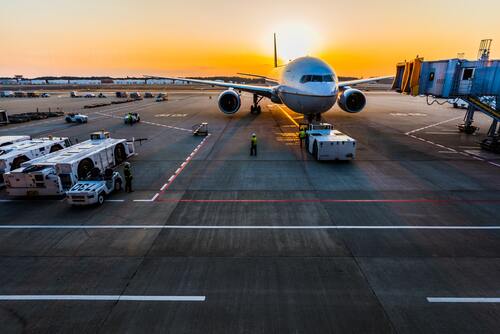Airport Technology Management Solutions


Ensuring the security of a modern airport requires an integrated approach and poses several tasks to managers. Particularly strict requirements are imposed on security systems, security, information transmission, and automation of airport buildings. The management structure of the airport develops and groves depending on several factors, both the external and internal environment of the airport. Taking into account certain operating conditions of the airport, its administration can create its structure based on what role it assigns to itself in all airport activities. As a rule, large manufacturing enterprises in this industry implement several ready-made software solutions to achieve the goals.
To date, airlines conduct their high-tech business at airports as unique organizations. Companies of this kind are aimed at ensuring cost-effective, timely, and safe civil air traffic. Thus, airport operators must take the necessary decisions to manage airport technologies. As a rule, these actions are aimed at minimizing the likelihood of malfunctions. And also, they can facilitate cooperation between airport administrations, airlines, and ground handling. In addition, airport operators have managerial responsibilities to plan and forecast future airport operations to capitalize on potential revenue and improve the quality of service and security. Today, software solutions are involved in the airline industry and are aimed at implementing the company’s goals to facilitate the work process.
The security of a high-tech airport is an important factor in front of managers. Airlines pay attention to such factors as:
As a rule, they invest in innovative solutions, thereby improving the quality of passenger service. Incident resolution enables the company to quickly respond to potential threats and monitor critical areas. The third factor is also no less important, as it allows you to increase efficiency and customer orientation through business support.
What is the operation process of the airport?
Airport software provides a variety of execution options. They can be divided into four types: ground operations, air operations, billing, and information management.
As a rule, ground operations are aimed at passenger service and maintenance of terminal buildings. Passenger operations include baggage handling and labeling. Terminal operations include resource allocation and personnel management. For example, the loss of luggage is a nuisance that many have encountered. Unfortunately, this is influenced by the human factor. However, the search for lost luggage is carried out using systems. The systems remember all passengers, know the frequency of their flights and collect bonuses that can be used later. It is very important to manage such a large flow of passengers correctly and this is not possible today without automation systems.
Billing operations cover aviation and non-aviation revenue. Accounting systems contain information about the airport’s finances. These can be bills for flights, processing, cash, sales at the airport, personnel payrolls, etc. Imagine how many passengers are departing from Heathrow Airport. They all paid for the flight using different payment methods. The system stores all the data and in case of ticket refund, the company will return the funds to the card due to the fact that the system has remembered them, etc.
Information management refers to the collection and dissemination of daily flight information. It can also be a repository of arrival or departure date.
A modern airport receives tens of thousands of passengers a day, major airports serve millions of passengers. The issue of managing all systems should be automated. The software constantly updates and synchronizes data in real time. Failures of such a system stop the work of the whole node, but internal technical specialists are always ready to solve the problem. Consequently, each of the digital systems at the airport has its own special purpose and purpose. All of them can be divided into several groups.
Airport management systems serve to optimize all these operations. This is an excellent solution that includes:

The modern world requires new solutions for reliable management of all processes. Intelligent airport management technologies can play an important role in meeting the requirements of social distancing at the airport to minimize queues and process the inevitable documentation needed to comply with sanitary standards in the future.
We are looking at the main modules (solutions) to facilitate airline systems. They include:
Each airport has its central database. It was created specifically for storing and updating all the necessary data about daily flights, seasonal schedules, available resources, and other flight-related information. The database is a key function for the operation of the airport. As a rule, it has a reliable connection to the rest of the airport modules. For example, airport information systems, revenue management systems, and air traffic control. The system can provide different information for different segments of users.
The functions of the Airport Database include:
The operations performed by this module include terminal operations and airline departure control. That is, it is passenger registration, customs, baggage handling, inspection, etc. Automated biometric control is installed at some airports. Passenger data is integrated into the border control system. This allows the relevant personnel to check the passenger in databases.
The services integrated into the airport management software include: